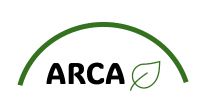
ARCA. Biocultural Heritage in Arctic Cities
Can urban biocultural heritage contribute to climate change adaptation and mitigation?

Where science, art, Indigenous and local communities unite: Collaboration to design and shape the future of Arctic urban life in a changing climate.
About the ARCA
Climate change is a significant issue that affects us all, especially those living in urban Arctic regions such as Fairbanks, Anchorage, Nome, Kirkenes, and Tromsø. The temperature is rising alarmingly, affecting the environment and the people who live there. However, there is hope, as these cities have diverse natures and cultures.
One approach that can help us tackle this challenge is biocultural heritage. It's about recognizing the close relationship between human cultures and the natural world. This approach can help us overcome the challenges posed by a rapidly changing planet.
Many indigenous communities in urban Arctic regions have a wealth of knowledge about their environment that has been passed down through generations. This knowledge can be incredibly valuable in dealing with issues like climate change. In ARCA, people from different backgrounds—like scientists, artists, and activists—work together to use this knowledge to develop new ideas and solutions.
The goal is to empower these communities to have a greater say in decisions that affect them and collaborate with other groups to make meaningful changes. Ultimately, respecting and preserving this knowledge can create a better future for everyone, including those living in urban Arctic regions.
International transdisciplinary research provides knowledge for understanding, mitigating, and adapting to global environmental change.
ARCA team

The George Washington University (GWU)
The George Washington University (GWU) . Click to expand.
The George Washington University (GWU) in Washington, DC, USA, will take the lead in combining data on land use/land cover change with ethnographic data and art-based research. This will allow for comparative analysis across cities, identification of best practices for utilizing biocultural heritage as a resource for adapting to climate change, and identification of relevant policy implications. The university will also organize co-creative workshops in Fairbanks.
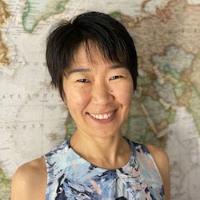
Project Leader: Research Professor Vera Kuklina (GWU)
Project Leader: Research Professor Vera Kuklina (GWU). Click to expand.
Role: Lead PI
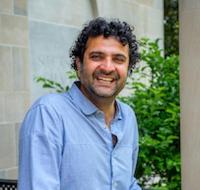
Professor Aman Luthra (GWU)
Professor Aman Luthra (GWU). Click to expand.
Role: Co-PI
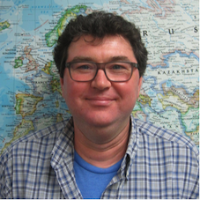
Professor Nikolay Shiklomanov (GWU)
Professor Nikolay Shiklomanov (GWU). Click to expand.
Role: Co-PI
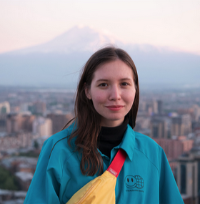
Diana Khaziakhmetova (GWU)
Diana Khaziakhmetova (GWU). Click to expand.
Role: Research Associate
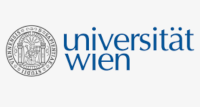
University of Vienna (UV)
University of Vienna (UV) . Click to expand.
The University of Vienna (UV) in Vienna, Austria, will focus on exploring the relationship between climate change and Traditional Ecological Knowledge (TEK), as well as biocultural heritage more broadly. The research will emphasize understanding how different Arctic cities are adapting to climate change and which aspects of biocultural heritage are being utilized in this process. The UV team will specifically study Nome, Alaska, and Kirkenes, Norway, and will also arrange a collaborative workshop in Nome.

Dr. Olga Povoroznyuk (UV)
Dr. Olga Povoroznyuk (UV). Click to expand.
Role: PI
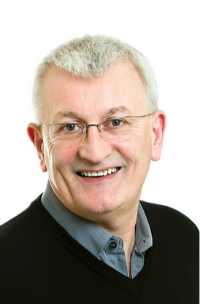
Professor Peter Schweitzer (UV)
Professor Peter Schweitzer (UV). Click to expand.
Role: Co-PI
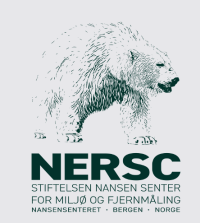
Nansen Environmental and Remote Sensing Center (NERSC)
Nansen Environmental and Remote Sensing Center (NERSC). Click to expand.
The Nansen Environmental and Remote Sensing Center (NERSC) in Bergen, Norway, will focus on understanding the bioclimatic changes in the study areas. They will use remote sensing and GIS techniques to analyze the local climate and its interactions with vegetation trends and the emergence of new ecosystems. Their goal is to develop an Arctic urban green space sustainability index. Additionally, the team will create GIS tools for efficient collection and dissemination of project data.

Dr. Victoria Miles (NERSC)
Dr. Victoria Miles (NERSC). Click to expand.
Role: PI
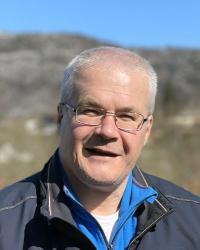
Professor Igor Esau (NERSC)
Professor Igor Esau (NERSC). Click to expand.
Role: Co-PI
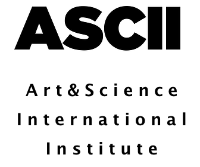
Art and Science International Institute (ASCII)
Art and Science International Institute (ASCII). Click to expand.
The Art Science International Institute in Biarritz, France, is a leading center for interdisciplinary research at the crossroads of cultural heritage, art, and science. Leveraging the ArtSLInK (Arts, Science, Local, and Indigenous Knowledge) platform, the Institute will coordinate innovative research projects that explore and reinterpret Arctic biocultural heritage through artistic expression. It fosters a collaborative and inclusive environment by bringing together Indigenous and non-Indigenous artists, scholars, and community representatives from diverse backgrounds. Through co-creative workshops and curating a collaborative exhibition, the Institute ensures meaningful participation and shared perspectives in all its endeavors.

Dr. Olga Kisseleva (ASCII)
Dr. Olga Kisseleva (ASCII). Click to expand.
Role: PI
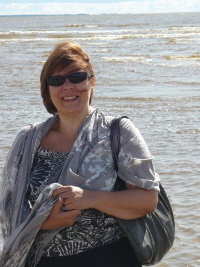
Olga Zaslavskaya (ASCII)
Olga Zaslavskaya (ASCII). Click to expand.
Role: Researcher and exhibition curator

Pikene på Broen
Pikene på Broen. Click to expand.
Pikene på Broen, a cultural organization located in Kirkenes, is planning to offer an art residency opportunity to its team members. As part of this initiative, they will collaborate on organizing a project exhibition and a local workshop. The purpose of these events is to foster collaboration between artists, scientists, and Indigenous knowledge holders, with the goal of co-creating cultural and artistic products that will celebrate and showcase diverse perspectives and traditions.
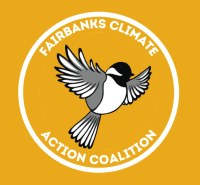
Fairbanks Climate Action Coalition (FCAC)
Fairbanks Climate Action Coalition (FCAC). Click to expand.
The FCAC is a dedicated organization working to address and mitigate the impact of climate change in the Fairbanks area. Their efforts include coordinating research activities and collaborating with other organizations to enact positive change.

Native Movement
Native Movement. Click to expand.
Native Movement is taking part in organizing a co-creative workshop aimed at fostering collaboration and contributing to creative practices, such as creating a mural in Fairbanks.
Case studies
01 / 05
Effects of climate change in urban Arctic areas
How can urban planning be shaped by the communities perspective while accounting for climate change adaptation in Arctic? 1. What types of urban places are there? 2. What values & emotions are attached to them? 3. How can those urban places be adapted to climate change? 4. How would the people like to adapt those places
Zoom In/Zoom Out
Art installation at Barents Spektakel. February 2025, Kikenes, Norway
ZoomInZoomOut
Interactive website.
Zoom In/Zoom Out
News
Reimagining Tromsø: An ArtScience Exploration at Barents Spektakel – February 21, 2025
Art Installation: Zoom In/Zoom Out – Urban Heat Islands Mapping – Regimes of Seeing Featuring: Victoria Miles, Olga Zaslavskaya, Olga Kisseleva, Vera Kuklina and Olga Povoroznyuk
This captivating art installation used thermal imagery and sensory mapping to reveal the hidden warmth patterns that shape Tromsø's urban environment. By visualizing the often-invisible processes of heat absorption and release within the city's infrastructure, the installation highlighted how energy use, material choices, and environmental impacts contribute to the urban heat islands effect.
In the Arctic context, where climate change is most visible, these unseen thermal dynamics are crucial to understanding how artificial surfaces trap heat and disrupt natural cooling processes. The installation invited visitors to rethink urban design and consider how Tromsø—and other Arctic cities—can evolve into more sustainable and climate-resilient spaces.
A powerful fusion of art and science, this exploration not only made the invisible visible but also fostered discussions on how to shape future Arctic urban landscapes for sustainability and environmental harmony.
The Remoteness Reframed: Arctic Urban EcoScapes and Biocultural Heritage. ARCA at the Barents Spektakel February 21, 2025, at Terminal B Kunsthall in Kirkenes, Norway
The event offered an engaging exploration of Arctic urban centers' role in climate adaptation. It featured the ARCA project, which focuses on how biocultural heritage—where nature and culture intersect—can support Arctic communities as they adapt to climate change.
Attendees were treated to insightful talks on topics such as biocultural heritage, Arctic urban ecosystems, and climate adaptation, with experts from Norway, Austria, France, and the USA contributing to the discussions. Topics like remoteness, urban heat islands, and the future of the Arctic were addressed, helping to reframe perceptions of the region from one of isolation to one of innovation and interconnectedness.
Key speakers included:
- Olga Kisseleva & Olga Zaslavslaya (Art&Science International Institute)
- Vera Kuklina (George Washington University, USA)
- Victoria Miles (Nansen Environmental and Remote Sensing Center, Norway)
- Peter Schweitzer & Olga Povoroznyuk (University of Vienna, Austria)
- Hanne Hammer Stien & Elin Kristine Haugdal (UiT The Arctic University of Norway)
ARCA kick-off meeting, 1 June, 2024, Bodø, Norway
Kick-off meeting of the Belmont Forum, Sustainable Science Days, Helsinki, 11 June, 2024.
ARCA Visits Fairbanks, Alaska
In June 2024, George Washington University's ARCA team visited Fairbanks, Alaska, to establish community partnerships and explore local climate adaptation strategies.
Klimathon 2024 "Culture-Based Solutions for Climate Adaptation" | Haugesund, 16-17, October, 2024